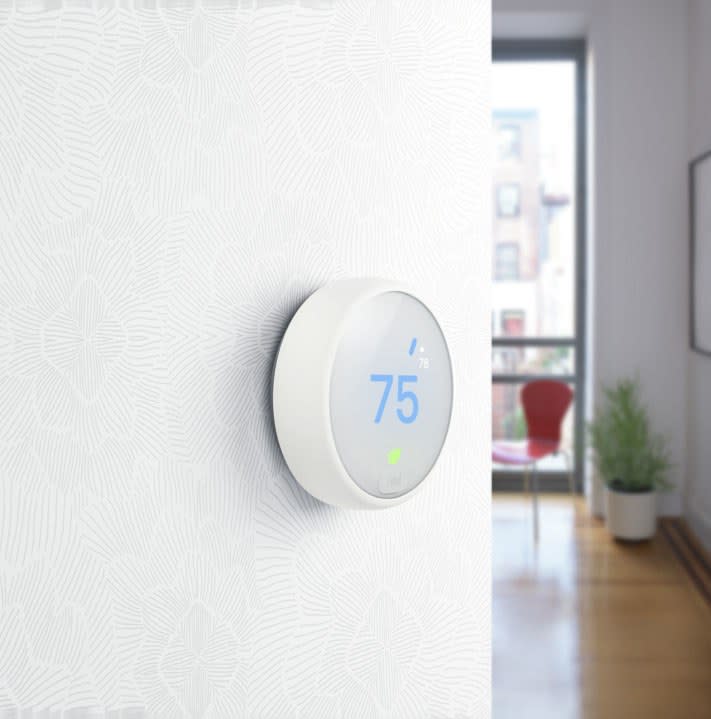7 Factors for More Energy-Efficient Winter Homes
This is the latest in a series of advice columns on AD PRO. With temperatures dropping, we asked celebrity contractor Stephen Fanuka, "What should designers keep in mind when designing energy-efficient homes for the winter?"
The role of a designer is ever-evolving. Not only do you have to keep up with the latest design trends, you also have to be aware of which elements are most important to the homeowner when it comes to the function of the home itself. With the onset of winter, two of the most pressing concerns for homeowners are the cost and the sustainability of energy—mostly during the colder months and especially in winter homes. I tell all my interior designer friends that considering both of these concerns when they're renovating and designing a home will ensure that their clients view them as worth every penny of the savings they'll enjoy down the road. Here are some of the favorite ideas that I implement when renovating a home to make it more energy-efficient and sustainable.
1. Room Layout
When laying out rooms, always try to take advantage of the sun's energy. Rooms that face south receive sun most of the day, which is ideal for family rooms or rooms in which you spend a good deal of time during the day. Rooms facing east get sun in the morning and cool off in the late afternoon—good for kitchens and bedrooms; try to keep these rooms from facing west. Rooms facing west get the sun in the late afternoon. Rooms facing north get the least amount of sun, so make these areas that are not used all the time; laundry rooms are ideal. When building a new home, try to situate the house facing north to south. This will minimize direct sunlight in the summer, saving you money on cooling bills, and maximize it during the winter, saving you on heating bills.
2. Room Color
We all learned about color relationships in school: Blue is cold, red is hot. Now it's time to apply the concept to your design. Wall colors affect the amount of sunlight and temperature a room takes in; colors also affect perception of the actual temperature. In a study by Color Matters, people in rooms painted a shade of blue felt five to 10 degrees cooler than the actual temperature. Those in rooms painted a shade of red or a dark color felt five to 10 degrees warmer. This suggests that you can use color to influence feeling in spaces that tend toward more extreme temperatures.
Meanwhile, light paint colors on walls reflect heat, so rooms that receive a lot of sun will also stay warmer if painted in a light hue.
3. Landscape
Be sure to plant trees or shrubs on the south and west sides of the house. This will protect the house from the sun in the summer months and, when the leaves fall off, will allow for the sun to warm your home in the winter months.

4. Programmable Thermostats
Fifty-five percent of your total annual energy bill is spent in the winter. And it's no surprise. We've all done it: set the temperature in the house and let the heat run all day long. Yet do we really need the temperature to be steady all day? Not really; we are gone most of the day, and at night we're in bed, under the covers. Programming the thermostat 10 degrees lower when away and five degrees lower at night can save you approximately 10 to 15 percent on your energy bills yearly. (For every degree lower that you set the thermostat, you can save approximately 3 percent on your energy bill.)
Another tip: Heat doesn't rise; it falls. Reversing your ceiling fan to turn counter-clockwise can raise the heat from the floor, better circulating it in the room and saving money.
5. Properly Sealed Air Gaps
If you were to combine all the small openings where unwanted air gets into the house, you'd have a hole as large as 36 inches. That's a lot of space for air to enter. Windows, especially old ones, should be checked and caulked yearly. Add this task to your painter's to-do list. Additionally, check for old weather stripping. It's cheaper to fix when the painter and carpenter are in the house than asking them to make a special trip. Check all windows and doors, behind gutters, pointing on brick as well as siding on the house. Meanwhile, install double-glazed windows, or use thermal-backed curtains if new windows are not in the budget.
6. Insulation
When renovating, it's important to check for insulation, especially on the perimeter walls of the home. Make sure to use the proper "R" (for resistance) rating. One rule of thumb: If the insulation falls apart when you grab it, it's time to replace it.

The Best LED Bulbs
7. Lighting
Like it or not, LED lights are the future, so get used to them. LED bulbs save a lot of money, and they last 10 to 15 years. All light fixtures are compatible with LED bulbs, and they come in warm and cold colors. In my opinion, using them is one of the quickest returns on your investment.
So, not only are you designing beautiful homes that will be enjoyed for years to come, but your clients are doing their part to save the planet for the next generation. Who's the rock star now? You! Take a bow.
More from AD PRO: Has Instagram Made Design Shows Better?
Sign up for the AD PRO newsletter for all the design news you need to know

